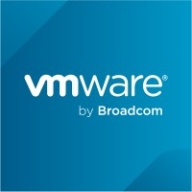

Find out what your peers are saying about IBM, Nutanix, Microsoft and others in Cloud Cost Management.
| Product | Market Share (%) |
|---|---|
| VMWare Tanzu CloudHealth | 5.2% |
| AWS Cost and Usage Reports | 0.8% |
| Other | 94.0% |

| Company Size | Count |
|---|---|
| Small Business | 4 |
| Midsize Enterprise | 2 |
| Large Enterprise | 4 |
AWS Cost and Usage Reports provide detailed insights into the costs and usage of AWS services, helping organizations manage their cloud expenses effectively.
AWS Cost and Usage Reports delivers comprehensive data on your AWS spending and resource use. This service allows businesses to set up customized reports with granular detail, offering valuable data that can be used to optimize costs. By leveraging this information, users can delve into specific areas of their cloud usage, making it easier to identify areas of potential cost savings and increased efficiency. These reports integrate seamlessly with other AWS services, allowing for more detailed analysis and insights.
What are the key features of AWS Cost and Usage Reports?Industries implement AWS Cost and Usage Reports to streamline their cloud operations. In the tech industry, companies use it to ensure efficient resource utilization. Financial services rely on it for precise budget tracking. In healthcare, the detailed reports help in maintaining compliance and optimizing resource use, enhancing service delivery.
VMware Tanzu CloudHealth, formerly known as VMware Aria Cost Powered by CloudHealth, is a specialized cloud management platform tailored for Multi-Cloud Cost Optimization. It offers comprehensive visibility into cloud spending across various providers, enabling users to identify areas for optimization and make informed resource allocation decisions. With features like reserved instance management, resource rightsizing, and automated cost governance policies, it facilitates financial management for optimal cost efficiency. Beyond cost optimization, Tanzu CloudHealth enhances cloud operations through workload optimization and governance automation, catering to multi-cloud environments encompassing public, private, and hybrid clouds. Its primary focus remains on enabling organizations to effectively manage and reduce cloud expenditures while supporting operations across diverse cloud platforms.
We monitor all Cloud Cost Management reviews to prevent fraudulent reviews and keep review quality high. We do not post reviews by company employees or direct competitors. We validate each review for authenticity via cross-reference with LinkedIn, and personal follow-up with the reviewer when necessary.